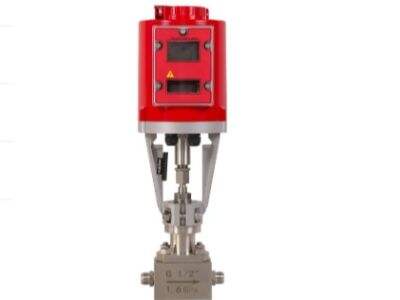In engineering, a rotary actuator is an important machine. It allows machines to move in rotation, which is important for several applications. This article will explain what rotary actuators are, how they work, the importance of rotary actuators, different kinds of rotary actuators, and the advantages of employing rotary actuators in factories.
Rotary Actuators and Their Functionality
Energizing machines through motion otherwise, Rotary actuators convert energy into movement, mostly mechanical process-generated energy through electric currents or hydraulic fluids that generate circular movements. From here rotation occurs to turn another part of a machine, open or close a valve, or perform anything else that requires a circular movement.
Rotary Actuator: The Unsung Hero of Engineering for Mechanical Control
Those are among the most indispensable nowadays engineering elements necessary across all industries, manufacturing, robotics, and spacecraft incorporation. Without rotary actuators, many machines wouldn't be much able to do their jobs, since most of them greatly contribute to fine control of movement, which is of utmost need to make fabrication possible in an efficient and precise manner.
Rotary Actuators and Their Types
Different types of rotary actuators have different functionality. They differ in type, including electric actuators, hydraulic actuators, pneumatic actuators, and many others. Electric actuators use electricity to produce motion; hydraulic actuators use the pressure of fluid in motion, while pneumatic actuators use compressed air. All have their advantages and disadvantages; therefore, choose wisely between them based on your work.
What Are The Benefits Of Using Rotary Actuators In Factories
They are precise; hence, they can operate machines with precision. They are clean, dependable, and decent, and are very well suited for harsh conditions in factories. Besides, rotary actuators deliver manufacturing efficiency improvements that lead to lesser wastage and higher outputs.
New Revolutions In Rotary Actuators And Their Effects
Rotary Actuators One of the most widely accepted and adopted designs of the present time in engineering modernization is rotary actuators. Light in weight and compact rotary actuators with improved efficiency, thanks to innovations like newer materials/making techniques, for example, enabling engineers to design a smaller device that can carry out more complicated operations with ease. Advances in controls, sensors, and technical improvements have increased the probability of using rotary actuators in automated systems, which further expands their prospective applications in modern engineering.
In short, Electric Actuators are modernly called organs of engineering. It forms the backbone in different application areas sustaining column motion and yielding efficiency when used as part of an organic whole. Understanding the different types and specifications of rotary actuators permits engineers to select the correct actuator for their application. Actuator technology advancement continues unabated and holds a bright near future in making these engineering tools.
 EN
EN
 AR
AR
 CS
CS
 FR
FR
 HI
HI
 KO
KO
 PL
PL
 PT
PT
 RO
RO
 RU
RU
 ES
ES
 TL
TL
 IW
IW
 ID
ID
 LT
LT
 SR
SR
 SL
SL
 UK
UK
 VI
VI
 ET
ET
 HU
HU
 TH
TH
 TR
TR
 FA
FA
 MS
MS
 UR
UR
 BN
BN
 JW
JW
 MN
MN
 NE
NE
 TA
TA
 MY
MY
 KK
KK
 UZ
UZ
 KY
KY



